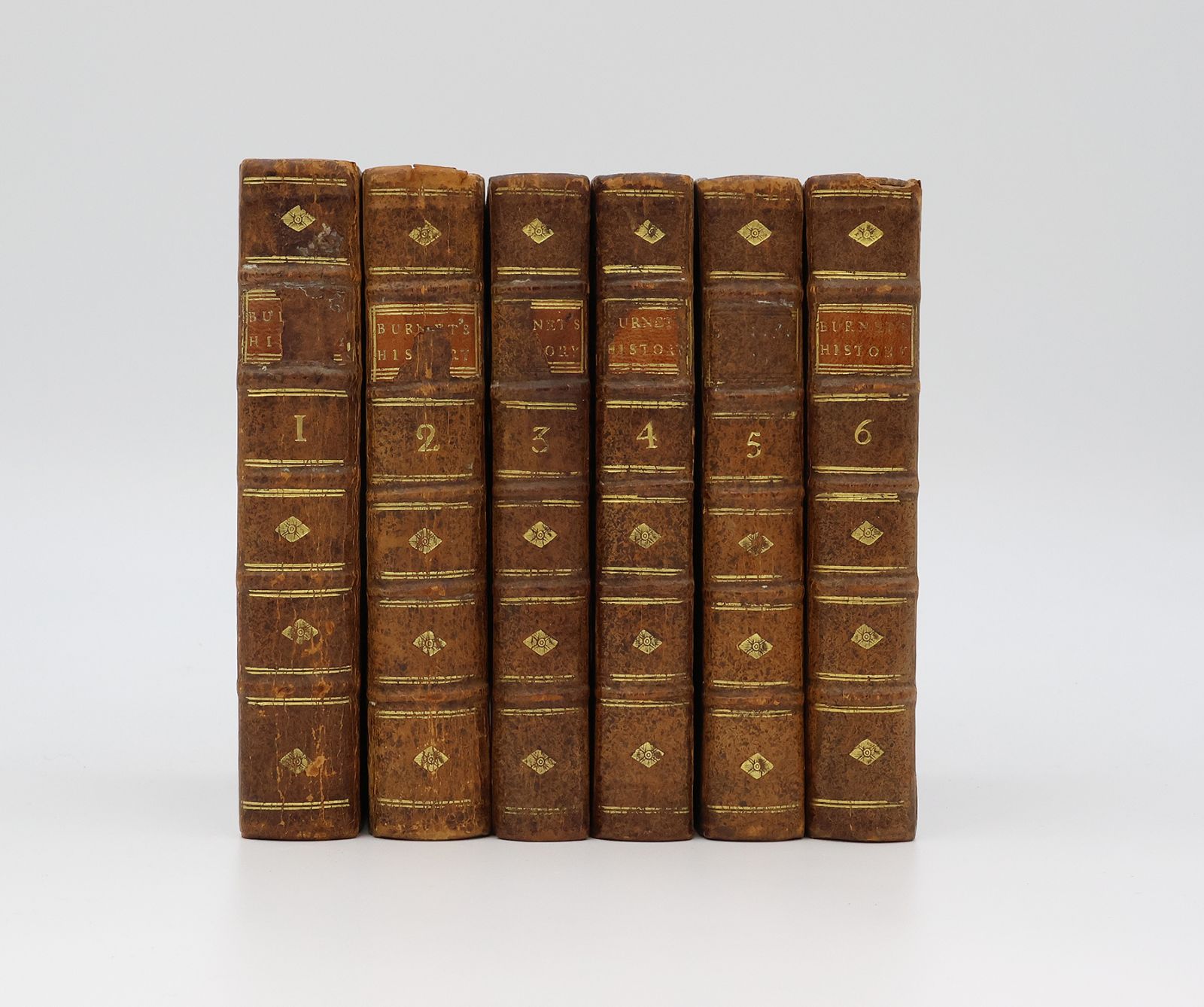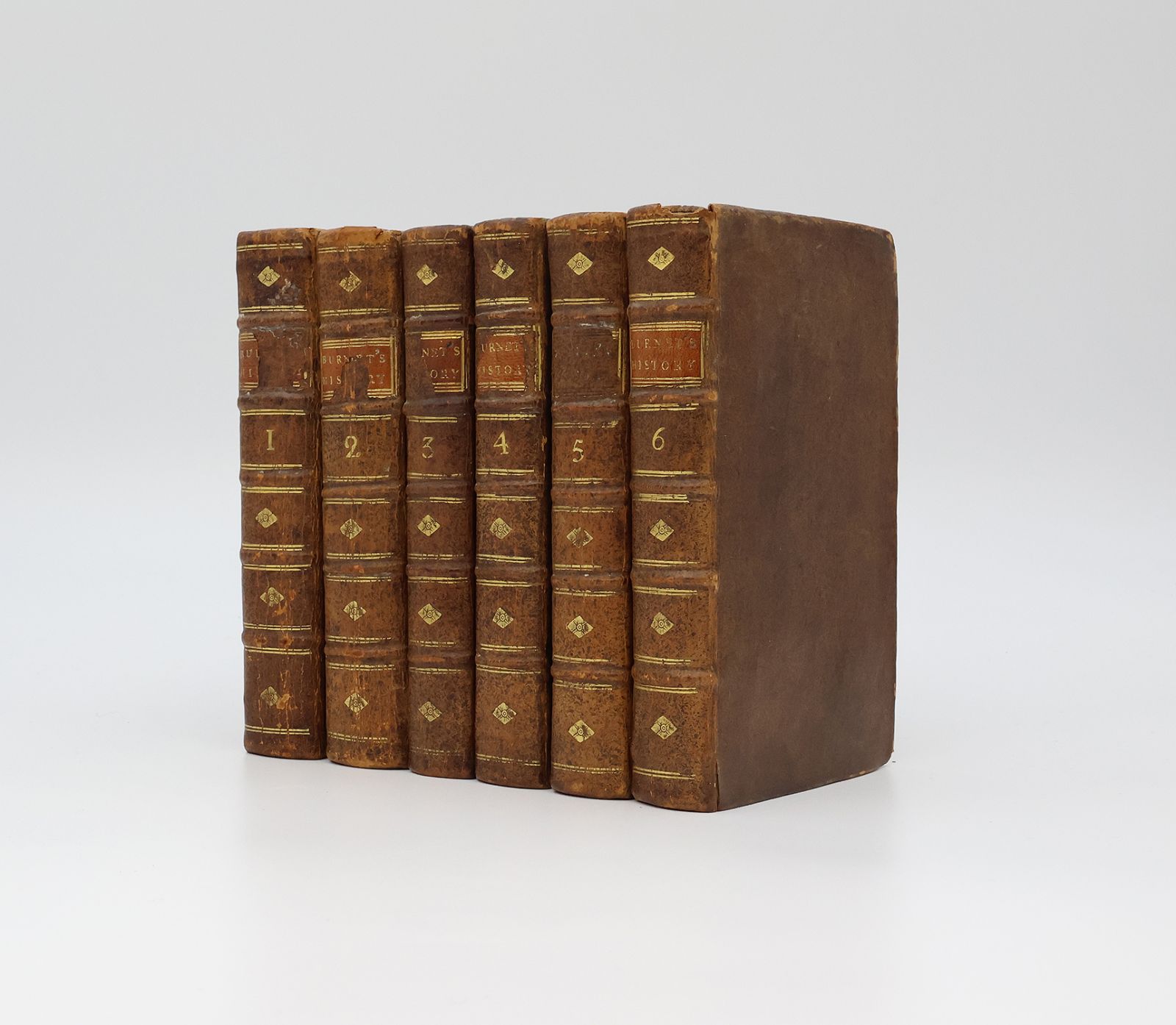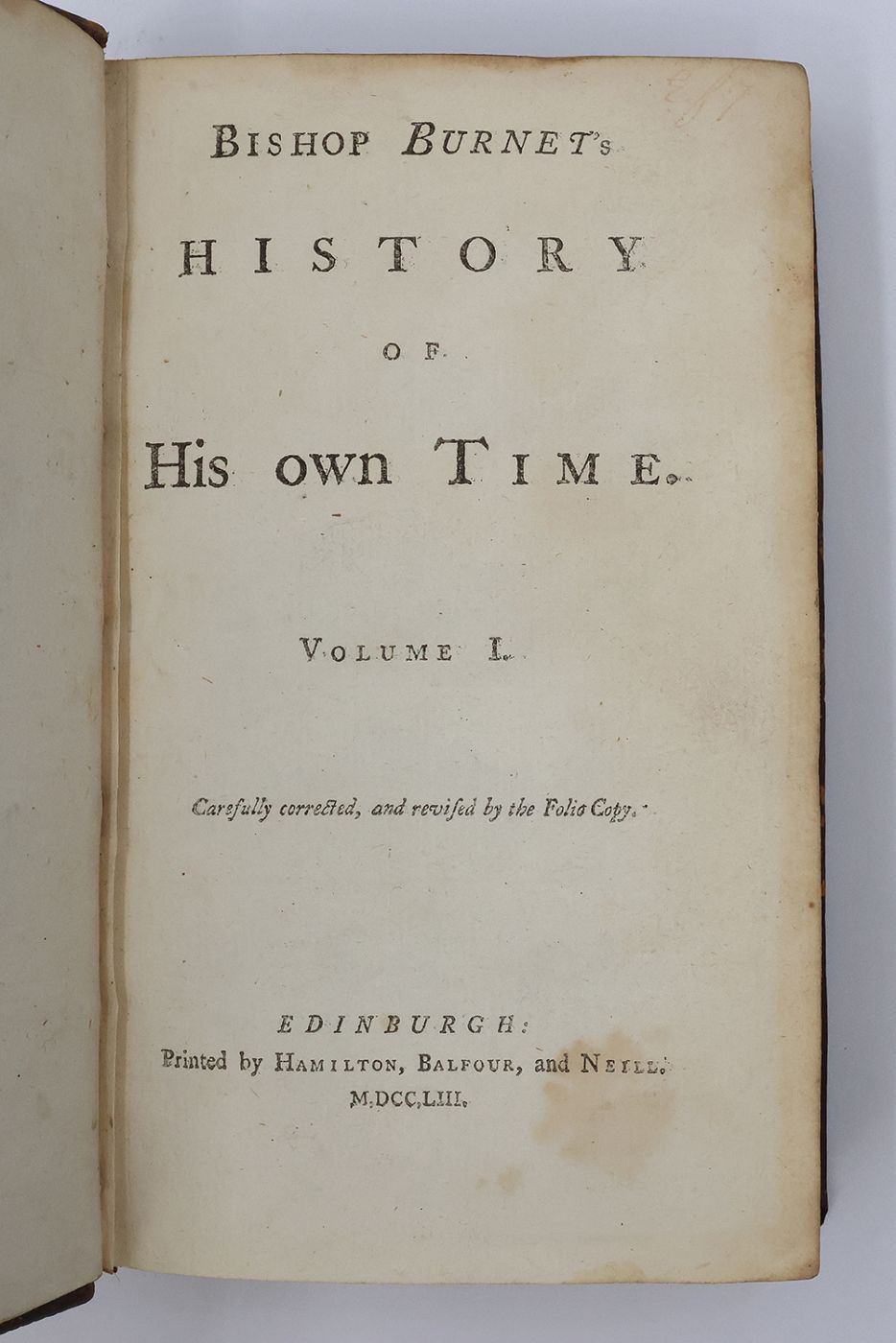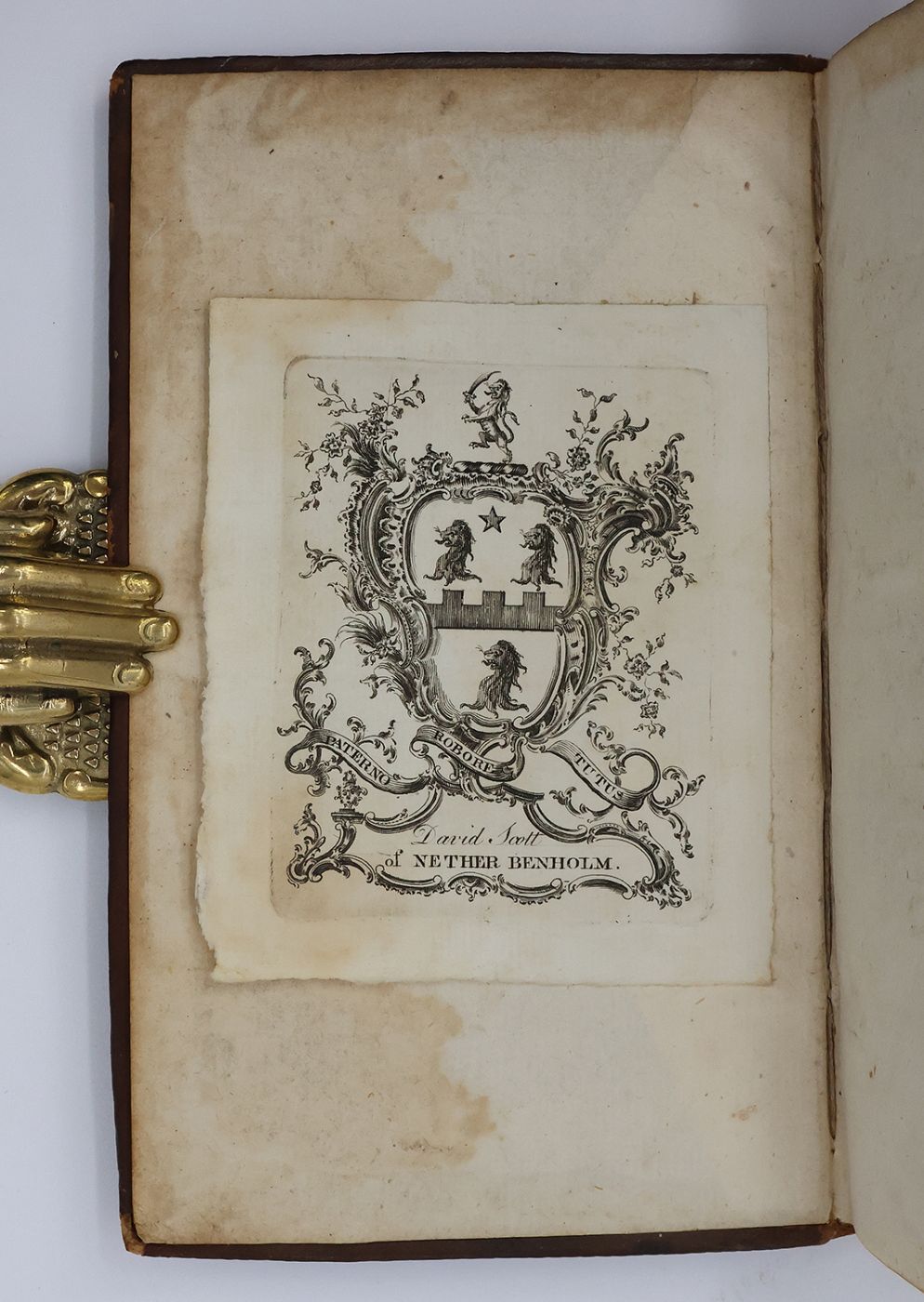BISHOP BURNET'S HISTORY OF HIS OWN TIME. Carefully corrected and revised by the Folio Copy.
Complete in six volumes. Contemporary full calf, five raised bands, gilt ruled and decorated compartments, titles in gilt on brown leather labels to the spine. Early 19th century armorial bookplate of David Scott of Nether Benholm to the pastedown or endpaper of each volume. Manuscript correction to the contents leaf in volume I. An attractive entirely unsophisticated set, the bindings firm with rubbing and scuffing to the extremities, several of the spine labels chipped (volumes I, II, III and IV) or perished (volume V). The contents, with some toning to the prelims are otherwise remarkably clean throughout.
Gilbert Burnet, Bishop of Salisbury (1643-1715) was a Scottish historian, philosopher and close confidante of both King William III and Queen Mary II. "The origin of Burnet's 'secret history', as he called it, goes back to 1683 when, in the fortieth year of his age, he resolved both to 'let the world see truly the good and bad that has been in me' and to 'discover all I know of the world, that I think may be of use to mankind' (Burnet, History, 1, fol. 1b). He worked on it from 1683 until his departure from England for the safety of the continent in May 1685. He seems to have kept a running account of events in England during the reign of James II from his vantage point in The Hague, where he spent the bulk of his exile. In October 1688, just before embarking on William's invasion of England, Burnet brought his 'secret history' up to date. Anticipating possible disaster on the impending expedition he left directions in his will for its posthumous publication. After the revolution he worked intermittently on it from 1691 through to 1703. In Spring 1703 he decided to recast substantially what he had already written. He had recently read Jacques-Auguste De Thou's Historia sui temporis and had been impressed with its literary style, and particularly with its attempt at impartiality. Inspired by De Thou's example Burnet sought to expunge his History of its more personal and autobiographical elements and to transform it from a memoir into a more strictly historical work. He was likely also have been influenced by the publication in 1702 of the first volume of Edward Hyde, first Earl of Clarendon's History of the Rebellion. Like Burnet, Clarendon had originally set out to write a life of himself, but had thought better of it and had written a formal history instead. Its success, and Burnet's admiration for it, must have spurred him on in his resolve to alter his own work. By 15 September 1704 he had completed his recast narrative, and in May 1705 he resumed his History from where he had left off. He worked on it on and off until 1713 when the History reached its conclusion with the treaty of Utrecht. The final two years of Burnet's life were taken up revising these latter portions. Ever since the appearance of Bishop Burnet's History of his Own Time it has been the subject of great controversy. It engendered much excitement and clearly sold well in England, each volume going through a number of editions. In the following years several Dutch and French translations were published on the continent. Not all the attention was favourable, and Burnet's critics, of whom there were many, fell over themselves to excoriate it" (ODNB). Originally published in two parts, folio in 1724 and 1734, this is an attractive early Scottish printing of one of the most important accounts of the period.
Stock code: 24591
£325
Published:
Category
Non-fictionBindings
Politics / Philosophy
Religion
History / Military





